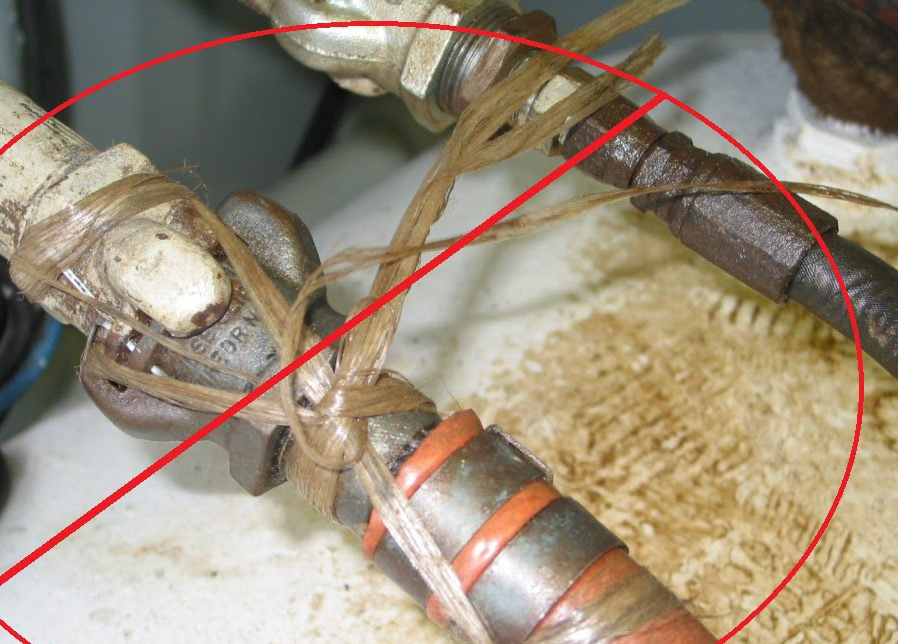For some, the idea that a hose could be dangerous may be met with a raised eyebrow or even produce a disbelieving sideward smile, but seriously, we kid you not. Hose, even when used at relatively low pressures, if not adequately restrained, can become incredibly dangerous and in some well-documented cases, have even been the cause of death.
Cutting costs by not investing in a product as simple as a whipcheck, at the expense of health & safety can have devastating consequences. Getting this stuff right is simply paramount. So, below you can find our guide to what you should consider when deciding whether or not to fit them.
1. One: Employee Safety
No surprise that this is at number one as the most important consideration when deciding whether or not to invest in whipchecks for pressure applications. Accidents at work cost industry considerably in financial terms, but much more importantly, companies have a duty of care to their staff and should be doing everything they can to keep their workers safe and happy.
2. Two: Equipment Safety
Who wouldn’t want to protect their own equipment? Damaged equipment has financial implications, both for replacement parts and machinery, plus the downtime for unsalable equipment.
If you are not worried about this, then you probably don’t even need to read any further. Take yourself off into the corner and give your self a strong talking to!
3. Three: Easy to Fit with No Tools Required
Whipchecks are not complicated or overly complex bits of kit. You do not need to be a Grade A engineer or rocket scientist to fit these things. You will not need an expensive range of tools. They are easy and quick to fit, so why not?
4. Four: Available to Fit All Sizes
Another reason to get involved! Whatever your hose diameter, there is almost certainly a suitable whipcheck for you to use. Standard whipchecks are available up to 3” diameter, so if your hose sits within this range, it is guaranteed that there is a hose restraint for your assembly. Not only that, but it’s the most commonly ordered range. There is nothing special about this – it’s just too easy!
5. Five: Specials Available for Larger Sizes
Okay, so you have a slightly larger hose (stop giggling)! The point is, you shouldn’t let this deter you either; there are ‘Specials’ available that cater for all sizes. So again, there is no excuse!
6. Six: Chances of Accidental Disconnection
It’s not only failing couplings that can cause hoses to whip under pressure. What happens if the hose is accidentally disconnected? Witnessing a flailing air hose thrashing around in a workshop environment is scary and for good reason.
7. Seven: Likelihood of Hose Connection Failure
Hoses also whip uncontrollably when couplings fail. Catching an air hose that has ‘escaped’ is almost impossible without turning the compressor off. This costs money in downtime, but moreover, this also represents a real health and safety hazard.
8. Eight: Standard Steel Construction
Whipchecks are a strong and reliable product made from simple but effective materials. These things are tough, strong, mighty, and unyielding! Standard versions are constructed from Steel Wire rope, Plated springs, and Aluminium ferrules. Sturdy stuff!
9. Nine: Stainless Steel Construction
For more demanding applications, such as for use with, seawater, in coal mines or instances where petrochemicals are being used, Stainless Steel Whipchecks are also available. Manufactured from Stainless Steel wire rope, Stainless Steel springs, and Copper ferrules. A tough cookie for sure!
10. Ten: Test Certificates
We have talked a lot, about how robust and hardy these products are. You need to know and be able to prove that the restraints you have sourced stand up to the test. Always ask for test certificates. Any decent supplier worth their salt should be able to provide this for you.
11. Eleven: Reduction in Downtime
Okay okay, so we’ve heard all about the potential danger of hose assemblies in pressure applications and the advantages of using descent restraints to protect operatives. Now for the money bit…
Downtime can be jaw-droppingly expensive. What does it cost you and your business for every minute your plant is not in production?
Conclusion
If you’re working in an environment with pressure hose, it is recommended that hose restraints are installed in all assemblies. Money, equipment, time, and ultimately lives will be saved with correctly installed safety equipment. In addition, it’s easy, cost-effective, and no tools are required. There really is no excuse not to!
If you would like to discuss your specific application with any one of our expert team, please call the Sales office on +44(0)1235 512500 – Alternatively you can use this contact form and fill in your details for a call back from us, or email sales@actionsealtite.com.





